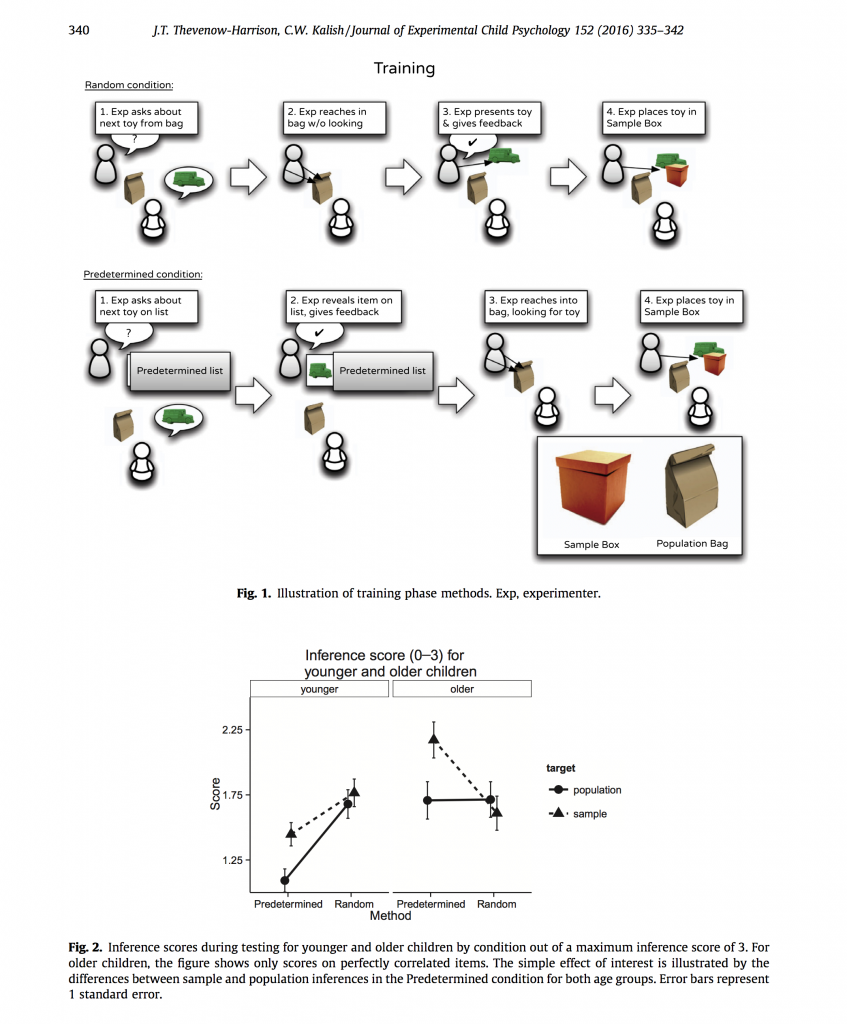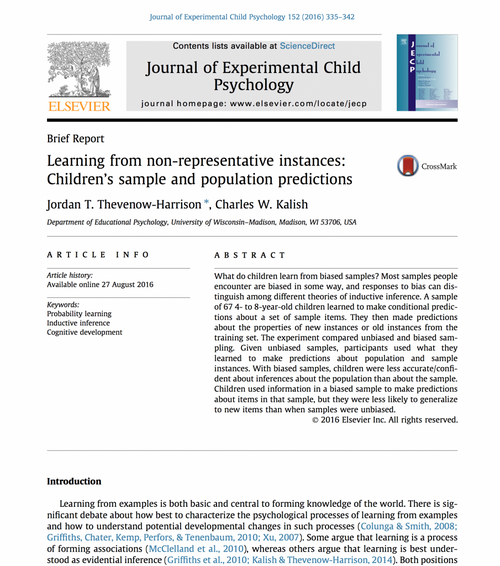A paper I wrote with my advisor, Charles W. Kalish, and published in the Journal of Experimental Child Psychology. It was based on the methods and research done for my master's thesis.
Thevenow-Harrison, J. T. and Kalish, C. W. (2016). Learning from non-representative instances: Children's sample and population predictions. Journal of Experimental Child Psychology, 152:335–342. <doi.org/10.1016/j.jecp.2016.07.013>
What do children learn from biased samples? Most samples people encounter are biased in some way, and responses to bias can distinguish among different theories of inductive inference. A sample of 67 4- to 8-year-old children learned to make conditional predictions about a set of sample items. They then made predictions about the properties of new instances or old instances from the training set. The experiment compared unbiased and biased sampling. Given unbiased samples, participants used what they learned to make predictions about population and sample instances. With biased samples, children were less accurate/confident about inferences about the population than about the sample. Children used information in a biased sample to make predictions about items in that sample, but they were less likely to generalize to new items than when samples were unbiased.


